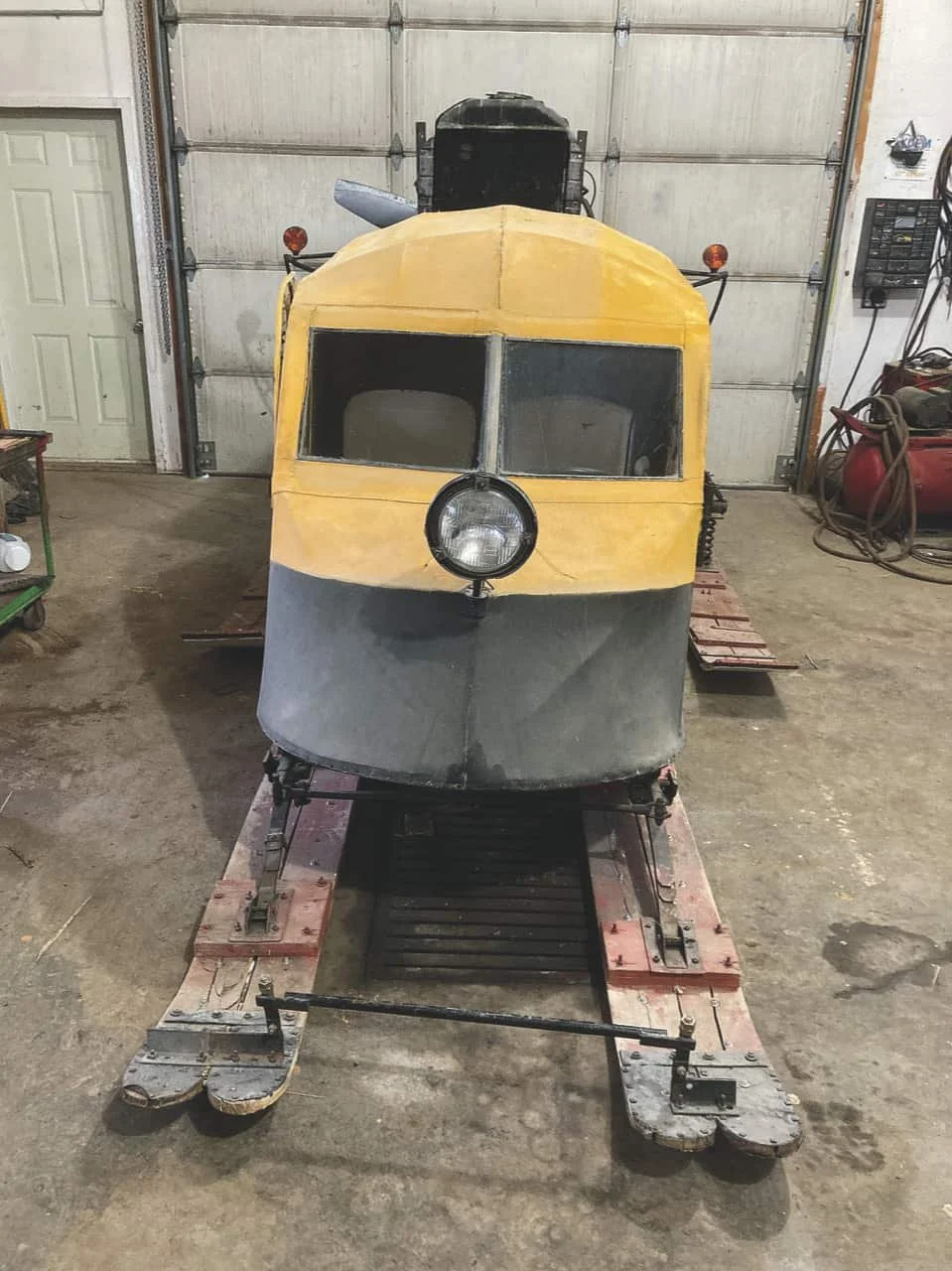Snowplane arrives at Kindersley museum
By Joan Janzen
Volunteers at the Kindersley Plains Museum recently welcomed a snowplane to their collection. The snowplane was owned by Wilf and Ruth Connor and had been constructed by Wilf and Ken Clark in Ken’s shop during one of those slow winter seasons. The result was a black and yellow snowplane that slid and thundered its way across the fields in late 1954.
Photo: This snowplane was recently donated to the Kindersley Plains Museum.
Saskatchewan farmers experienced some furious winter storms in the 1950s, which blew in plenty of snow - perfect for snowplane excursions. The Connor family used their snowplane to collect supplies and mail as it soared over the hard-packed snow. They described the snowplane’s ride with the words “goes like lightning, sounds like thunder.” Lightning speed was equivalent to approximately 40-50 miles per hour, and brakes were applied by Wilf sticking his foot out the door.
Glen Sitter, who volunteers at the museum, also recalls constructing a snowplane, just for fun, back in 1949, with the help of Gary Hamilton and Merc Bishop. A lever was positioned between the seats, which, when pulled, caused something like a rake to go into the snow and act like a brake. However, the Village of Spy Hill’s website notes that the first snowplane was created due to the ingenuity of a mechanic from Spy Hill, Saskatchewan.
Spy Hill is a tiny village located 93 kilometres southeast of Yorktown, where Karl Lorch resided. His first attempt was made in 1928 when there were few graded roads and no snow removal equipment. Karl, along with his friend, George Thorpe, converted a Model T Ford into a primitive snow machine, which didn’t satisfy Karl’s expectations.
One day, while visiting near an airport, Karl watched a ski-equipped aircraft land and glide up to the hanger. It was just the inspiration he needed. Mounting an engine from a late model car to a welded steel frame, Karl fashioned a five-foot propeller from birch wood and bolted it to the crankshaft. A single runner was attached in front to steer the machine, while two more runners in the rear completed the plane. The gas tank and battery were on a platform under the engine. Later, improvements were made using aircraft material for the body and a Model A Ford engine.
Soon a plant at Spy Hill was in production, but Karl Lorch also built snowplanes in North Dakota for three years. As the fame of the Lorch Snowplane spread, inquiries came from as far as the Soviet Union.
Snowplanes were sold to doctors, taxi services, the RCAF, the Saskatchewan and Manitoba governments, as well as to the general public throughout Canada and the northern USA.
The Village of Spy Hill always kept one snowplane on hand for local use to transport doctors, school teachers, sick patients and expectant mothers. The snowplane is an important part of the history of Spy Hill, where 19-year-old Karl Lorch built and patented the snowplane in 1929.
Meanwhile, the volunteers at the Kindersley Museum are looking forward to taking their newly acquired snowplane for a run sometime soon while there’s snow on the ground. But in Saskatchewan, they don’t need to rush because the snow usually stays around until April.

